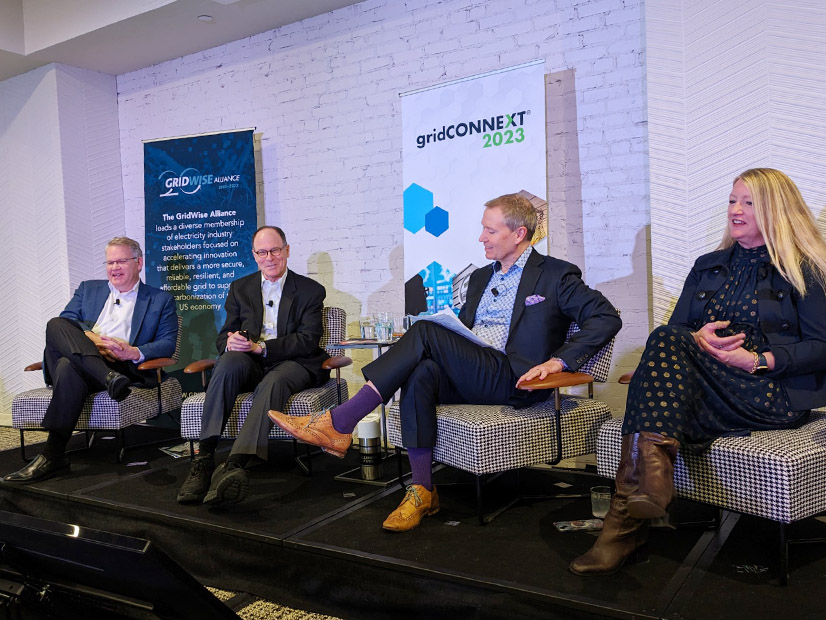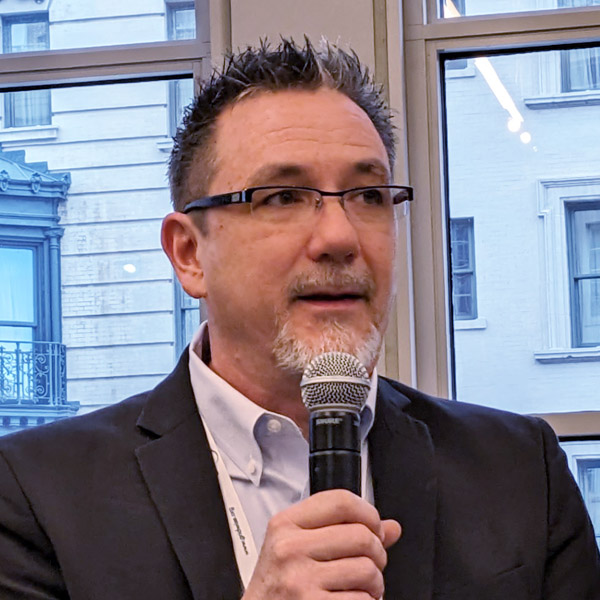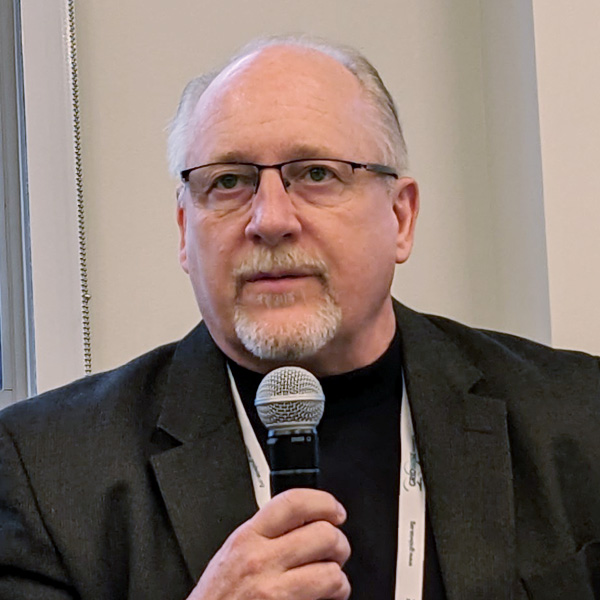
WASHINGTON — As utilities and regulators face unprecedented growth in power demand — from data centers, chip and other clean tech manufacturing, and building and transportation electrification — figuring out how to plan and finance distribution systems has become a similarly fast-moving target, according to speakers at the GridWise Alliance gridCONNEXT conference.
The industry now faces a “trilemma,” attempting to balance decarbonization, reliability and affordability, said Peter Fox-Penner, partner and chief impact officer at Energy Impact Partners (EIP), a clean tech investment firm funded by utilities.
“There are many related challenges of decarbonizing supply, doubling the size of the grid, while … incorporating AI, severe weather, institutional distrust and other things,” Fox-Penner said during a Dec. 6 panel on how to draw more, and more diverse, investment into grid expansion.
The effects of extreme weather, exacerbated by climate change, also are becoming a major challenge to the economic viability of utilities, he said. Citing figures from a recent analysis from Fitch, Fox-Penner noted that extreme weather events caused close to one quarter of the rating agency’s downgrades for utilities between 2018 and 2023 (year to date) versus none in the previous five-year period.
A shift is needed in the industry’s and consumers’ understanding of affordability, away from cost per kilowatt-hour on electric bills toward “wallet-share,” the amount households spend on electricity “versus everything else,” he said.
While electric rates certainly have been hit by inflation, wallet-share is at 1950s levels and even fell slightly in 2022, he said. “Affordability is a tremendous challenge … because of the macro environment we’re operating in, rather than the fact that electricity remains an incredible value.”
Prices will come down with new and better technologies for electrifying transportation and buildings, he said.
A paradigm shift also is needed in utilities’ approach to distribution planning, which typically runs in two- to five-year cycles, with system upgrades made incrementally, on an as-needed basis, said Jeff Smith, director of transmission and distribution operations and planning at the Electric Power Research Institute (EPRI).
“But if we keep doing that sort of incremental approach, will that lead us to a suboptimal location later down the road? … Is that something we’re going to regret doing by 2040, 2050?” he said.
Working with the Department of Energy and utilities, EPRI is trying to ask different questions, Smith said during a panel on distribution planning. The goal here is to “take that long-term look and identify the grid service needs, the grid design requirements, the operating requirements that are necessary for deep decarbonization,” he said.
Industry stakeholders and their concerns appear endlessly complex, Smith said — how many transformers will be needed, when and how to introduce time-of-use rates, how to integrate storage — “but we can’t let analysis paralysis stop us from moving forward. … The needs of the grid are changing at a pace we’ve never seen before.”
Distribution system design and projections of load growth typically have been based on historical information, Smith said. “We need to start looking to the future. … Our loads are changing, demand is changing, the shapes are changing, the flexibility of resources are changing. How does that change actually [affect] our design?”
Larry Bekkedahl, senior vice president for advanced energy delivery at Portland General Electric (PGE), also called for a closer focus on load, rather than the typical industry focus on generation capacity.
“You’ve really got to move and advance yourself to pick up these loads,” Bekkedahl said, noting the Portland area is producing 15% of all the computer chips manufactured in the U.S., with more chip plants and data centers on the way.
“When I think about our load, we right now have over 2 GW of requests on a 4.5-GW system,” he said. Demand is growing at 4% a year, versus a previous rate of about .5 to 1% a year.
“How do you plan for that? Because there’s a lot of two-way, bidirectional energy that’s going to be happening on the distribution side,” Bekkedahl said. “What we’re trying to do is bring the peaks down and push utilization up. That’s our motivation, and we want to use the system we have as much as possible but drive those peaks down wherever possible.”
Retrofit Everything Everywhere
The speed of change and its impacts on the electric power industry were core themes for both panels.
Fox-Penner sees “two distinct waves of [load] growth that are different in nature.” In the near term, artificial intelligence, cryptocurrency and other high-tech applications will produce “very lumpy” demand curves, while transportation and building electrification will take longer, but drive bigger growth, he said.
“It’s worth keeping those two things in mind, I think, because the policy responses … and the forecasting techniques we want to use are different,” he said.
They also will draw different investors, said Karen Wayland, CEO of the GridWise Alliance, noting that high-tech companies — such as Google and Microsoft — are pouring major investments into clean energy for their data centers. But the cost of building and transportation electrification likely will fall on utilities and their customers.
Wayland also said she believes the industry has the technology to meet anticipated load growth and is “looking in both the right places. We’re looking [at] developing utility scale. We’re looking for local resources.”
Phil Dion, senior vice president for customer solutions at the Edison Electric Institute (EEI), the industry trade group for investor-owned utilities, said he believes utilities will prioritize investments in familiar, low-risk priorities — retrofitting “everything we have as fast as possible,” energy efficiency and demand-side management and flexibility.
“The idea of building transmission lines is imperative, but it’s a way up. It’s a decade away,” Dion said. “So, we need to be investing in technologies, anything we can do to squeeze 10% more [electricity] out, without compromising safety.”
Wallet-share notwithstanding, consumers’ perceptions of power affordability may affect utilities and regulators’ willingness to invest in the infrastructure needed to electrify everything, everywhere, he said.
The cost of expanding distribution will fall primarily on utilities — and require regulatory approval — Dion said, so, “if we don’t start leveraging other piles of capital, this is going to be a problem.”
DOE’s Grid Resilience and Innovation Partnerships program — which recently awarded $3.46 billion for transmission and distribution system upgrades — is a step in the right direction, he said, but more money will be needed, including “leveraging customer capital as well.”
Smith argued for a focus on right-sizing distribution systems, since under- or over-sizing could result in added expense and underused or stranded assets. Right-sizing also means making sure infrastructure is built in the right location, at the right time, he said.
Challenges ahead include figuring out “how do we actually make a substation expandable … sizing them appropriately for the future” and making decisions about primary voltage levels, he said. Voltage levels range from 4 kV to 34.5 kV, with most utility distribution systems in the U.S. working at 15 kV.
“The questions we need to be asking ourselves is, for 2050 [clean energy goals], is 15 kV going to get us there?” Smith said. At 34.5 kV, “you can serve much more customers from a [distributed energy resource] and load perspective, and that’s why so many utilities are looking at maybe dual voltage transformers, recognizing that the voltage they’re using now isn’t something they’re going to use later down the road.”
‘Every Ounce of Flexibility’
As presented by Bekkedahl, PGE is a case study in the challenges utilities face in distribution planning in an extremely fast-changing energy landscape.
The utility was able to ride out Oregon’s asphalt-melting heat wave in the summer of 2021, just barely, he said. “We hit saturation; there was nothing else to turn on. We hit a flat peak … and we were kind of stunned by it, and we survived it, and the next summer, when it’s 95 degrees, we were almost at the same level because everybody went out and bought air conditioners.”
PGE has shifted from a winter-peaking to a summer-peaking system, and it also has been contending with south-to-north, very cheap energy flows from California, requiring quick curtailment of that power at the state border to protect the utility’s distribution system from overload, Bekkedahl said.
“If you’re in a dispatch room and you’ve got this big red screen in front of you that’s saying you’ve got to start curtailing customers, you’ve got to do something,” he said. PGE was able to call on 90 MW of demand response to shave its peak, which “made the difference in that moment. So, I want every ounce of flexibility I can get in the future.”
Looking ahead, Bekkedahl outlined the “big five” must-haves for successful distribution planning, beginning with visibility.
“You’ve got to be able to see into [the system] and think about the influence that you have,” he said. “If you don’t have visibility into your distribution system, none of this works. You’re going to build your plan, it’s going to be for the peak, it’s not going to be something that’s flexible.”
Better forecasting is next, followed by flexibility. In the home of the future, “every device is going to have intelligence,” Bekkedahl said. “How are we using them? How are we interfacing with them?”
Resiliency and redundancy — backup systems — come next, with Bekkedahl pointing to inverter-based systems as one way to keep household electricity running in the event of a power outage, and possibly to provide demand response.
The last must-have is power quality, with a basic paradigm shift that can take into account and monitor the performance of the thousands of devices being turned on and off across the system, he said.
De-risk, Decarbonize, Scale
Looking ahead, Fox-Penner anticipates that distribution upgrades and expansion could be the top draw on utility investments over the next decade. “And that’s where you hit resilience and affordability issues, and so that takes working with [existing] conditions, using every single tool,” he said.
For utilities, part of the challenge is the regulatory limits on their ability to plan and order equipment for the future, Dion said. “Imagine you’re a distribution full-time provider … and you’re sold out through 2026. You have nothing,” he said.
“We need regulatory regimes that allow us to make purchases into the future, not just replace the stuff that’s broken, but … the new stuff that needs to be developed for what we need, almost like a hedging policy,” he said.
“[We] have to be able to invest in things that we need that are facing the biggest barriers,” Fox-Penner agreed, pointing to building electrification as one sector that will be critical for both homeowners and apartment renters. “That’s right at the heart of our existence, and we need to go in there and change the heating and cooling system,” he said.
He sees continuing innovation as key, “particularly in the spaces where the solutions aren’t well developed, which are often called … the supplemental power sources to wind and solar,” such as nuclear, geothermal or carbon capture.
With its funding from utilities and other investors, EIP has developed a model that focuses on investing in technologies that utilities will need and can pilot and then scale, Fox-Penner said. The company has more than 100 businesses in its portfolio and “over $1.4 billion worth of business going on between our portfolio companies and the members of our coalition,” he said.
“I think of the industry as a fast follower,” he said. “Our model is to de-risk decarbonization measures for our incumbent investors. Once it’s de-risked, it can scale.”



